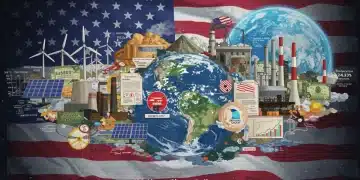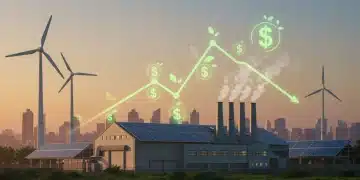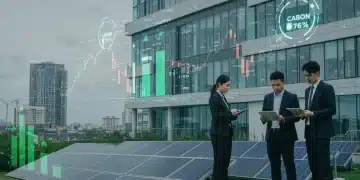Time-Sensitive Climate Policies: 5 Key US Regulation Changes for 2025
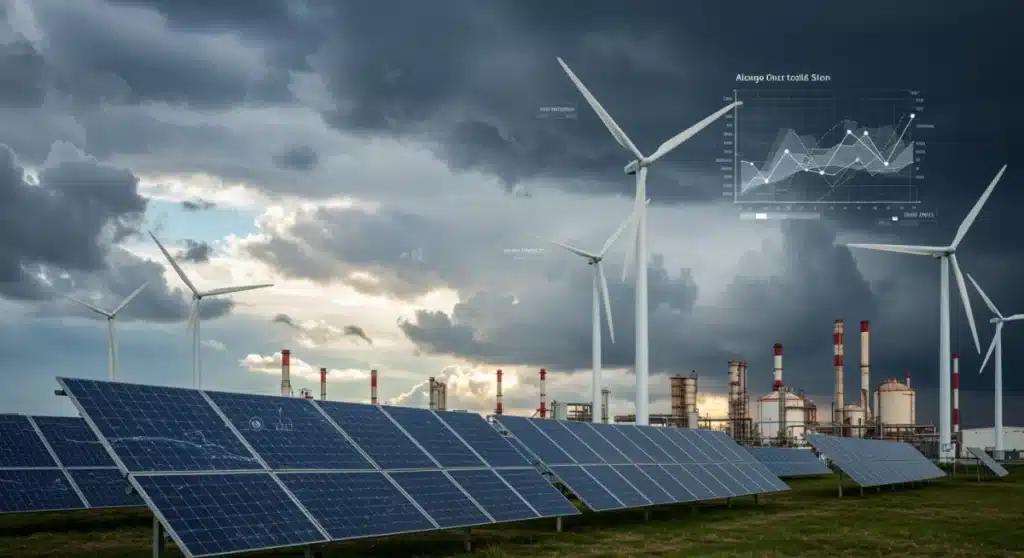
Expected by 2025, five critical time-sensitive climate policies are set to redefine U.S. environmental regulations, driving substantial shifts in sectors ranging from energy production to transportation and manufacturing.
Breaking news reveals that Time-Sensitive Climate Policies: 5 Key Changes Expected in U.S. Environmental Regulations in 2025 are rapidly taking shape, promising to significantly alter the landscape for businesses and consumers across the nation. These imminent shifts underscore a critical juncture in America’s approach to environmental stewardship and climate action.
Accelerated Emissions Standards for Vehicles
The U.S. Environmental Protection Agency (EPA) is moving to finalize stringent new emissions standards for light-duty and medium-duty vehicles, with full implementation anticipated by 2025. These regulations aim to significantly reduce greenhouse gas emissions and improve air quality nationwide. The push for cleaner vehicles is a cornerstone of the current administration’s climate agenda, reflecting growing concerns about transportation’s contribution to global warming.
These updated standards represent a substantial leap from previous regulations, compelling automakers to accelerate their transition toward electric vehicles (EVs) and more fuel-efficient internal combustion engine (ICE) technologies. The EPA’s proposal emphasizes a multi-year strategy, designed to provide industry stakeholders with a clear roadmap for compliance and innovation.
Impact on Automotive Manufacturing
Automakers are already retooling factories and investing heavily in EV research and development to meet these forthcoming requirements. This shift is not just about compliance; it’s about competitive advantage in a rapidly evolving global market.
- Increased investment in electric vehicle production facilities.
- Introduction of new battery technologies and charging infrastructure.
- Phased reduction in the production of high-emission gasoline vehicles.
The regulatory framework also includes incentives for innovation, encouraging manufacturers to explore alternative fuels and advanced powertrain designs. This proactive approach seeks to balance environmental protection with economic growth within the automotive sector.
New Methane Emission Rules for Oil and Gas
Another pivotal change expected in 2025 involves comprehensive new rules targeting methane emissions from the oil and gas industry. Methane, a potent greenhouse gas, contributes significantly to global warming, and its reduction is a high-priority item for climate policymakers. The EPA’s proposed regulations build upon existing frameworks, expanding their scope and stringency to cover a broader range of sources and activities within the sector.
These regulations will mandate enhanced leak detection and repair programs, stricter limits on flaring and venting, and the adoption of best available technologies to minimize methane release throughout the production and distribution chain. The goal is to achieve substantial reductions in methane output, aligning the U.S. with international efforts to curb this powerful climate pollutant.
Technological Adoption and Compliance Challenges
Industry players are bracing for significant operational adjustments and capital expenditures to comply with these new mandates. Many companies are already exploring advanced monitoring technologies and process improvements to mitigate emissions efficiently.
- Deployment of continuous monitoring systems for methane leaks.
- Upgrades to existing infrastructure to prevent accidental releases.
- Increased reporting requirements for methane emissions data.
The new rules are expected to drive innovation in emission control technologies, creating new market opportunities for environmental service providers. While posing initial challenges, these regulations are anticipated to foster a more sustainable and responsible oil and gas industry in the long term.
Expansion of Renewable Energy Incentives
The federal government is set to expand and refine incentives for renewable energy projects, further accelerating the transition away from fossil fuels. These expanded incentives, building on existing legislation like the Inflation Reduction Act, are designed to make clean energy more competitive and accessible across the nation. The goal is to dramatically increase the share of renewables in the U.S. energy mix by 2025 and beyond.
These policy enhancements will likely include extended tax credits for solar, wind, and geothermal energy, as well as new financial mechanisms to support energy storage solutions and grid modernization. The emphasis is on creating a robust and resilient clean energy infrastructure capable of meeting future demand while significantly reducing carbon footprints.
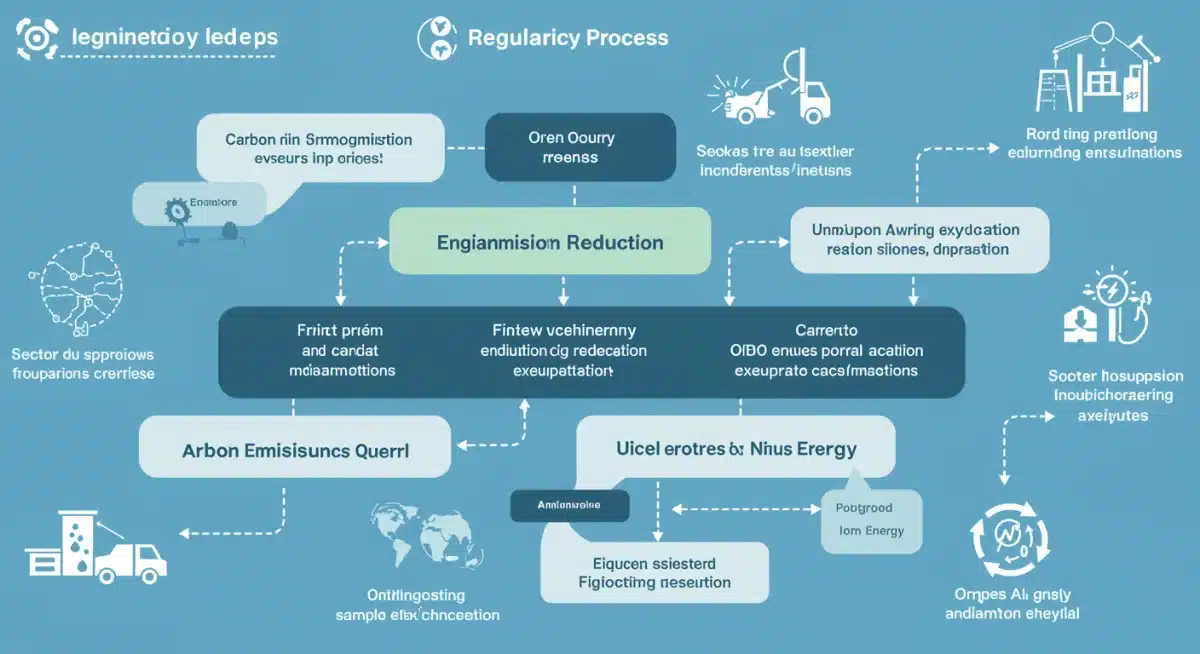
Boosting Clean Energy Investment
The expanded incentives are projected to unlock billions in private investment, stimulating job creation and technological advancement in the renewable energy sector. This economic boost is a key aspect of the policy’s design, aiming to demonstrate that climate action and economic prosperity can go hand-in-hand.
- Longer-term tax credits for renewable energy production and investment.
- Grants and loans for community-based clean energy projects.
- Support for domestic manufacturing of renewable energy components.
These policies are critical for achieving national climate targets and ensuring energy security. They underscore a strategic commitment to positioning the U.S. as a global leader in clean energy innovation and deployment.
Revisions to National Ambient Air Quality Standards (NAAQS)
The EPA is also poised to revise the National Ambient Air Quality Standards (NAAQS) for several key pollutants, including particulate matter and ozone, with new implementation deadlines expected in 2025. These revisions are based on the latest scientific understanding of air pollution’s health impacts, aiming to provide greater protection for public health and the environment.
Stricter NAAQS will require states and local governments to develop and implement more aggressive plans to reduce air pollution. This will likely involve tighter controls on industrial emissions, further regulation of mobile sources, and increased monitoring efforts. The revised standards reflect a commitment to ensuring all Americans have access to clean, healthy air, especially in historically overburdened communities.
Implications for Industry and Public Health
Industries that are significant emitters of regulated pollutants will face new compliance challenges and may need to invest in advanced pollution control technologies. However, the long-term benefits for public health are expected to be substantial, reducing rates of respiratory and cardiovascular diseases.
- More stringent emission limits for power plants and manufacturing facilities.
- Enhanced air quality monitoring networks across urban and industrial areas.
- Increased emphasis on environmental justice in air quality planning.
The revisions are a testament to the dynamic nature of environmental science and policy, continually adapting to new research and societal needs. They represent a critical step in the ongoing effort to safeguard both human health and ecological integrity.
New Regulations on PFAS “Forever Chemicals”
Significant new regulations targeting per- and polyfluoroalkyl substances (PFAS), often referred to as “forever chemicals,” are also on the horizon for 2025. These chemicals, found in a wide range of consumer and industrial products, are highly persistent in the environment and have been linked to serious health concerns. The EPA is developing comprehensive strategies to address PFAS contamination, from manufacturing to disposal.
Expected regulations include setting maximum contaminant levels (MCLs) for PFAS in drinking water, designating certain PFAS as hazardous substances under Superfund law, and implementing restrictions on their manufacturing and use. These measures aim to protect public health by reducing exposure to these pervasive and harmful chemicals.
Addressing Widespread Contamination
The scope of PFAS contamination is vast, affecting water sources, soil, and even human bloodstreams. The new regulations will necessitate widespread testing, remediation efforts, and a shift away from PFAS-containing products across numerous industries.
- Mandatory testing for PFAS in public water systems.
- Increased funding for PFAS remediation projects.
- Development of safer alternatives to PFAS in industrial applications.
This represents a major environmental undertaking, requiring collaboration between federal agencies, state governments, industries, and local communities. The long-term objective is to eliminate PFAS from the environment and ensure the safety of water and consumer products.
Enhancing Climate Resilience and Adaptation Strategies
Beyond emissions reductions, 2025 is expected to see a significant focus on enhancing climate resilience and adaptation strategies across U.S. infrastructure and communities. As the impacts of climate change, such as extreme weather events and rising sea levels, become more pronounced, federal agencies are developing policies to help states and localities better prepare and respond. This includes integrating climate risk into infrastructure planning, promoting nature-based solutions, and funding projects that protect vulnerable populations.
These strategies aim to build more robust communities capable of withstanding future climate shocks, while also fostering ecosystems that can adapt to changing conditions. The emphasis is on proactive measures rather than reactive responses, ensuring long-term sustainability and safety for all.
Federal Support for Local Initiatives
Federal programs are being reoriented to provide greater financial and technical assistance for local climate adaptation projects. This includes grants for coastal protection, drought resistance, and urban heat island mitigation, recognizing that climate impacts are felt most acutely at the local level.
- Increased funding for climate-resilient infrastructure projects.
- Development of climate vulnerability assessments for critical assets.
- Promotion of green infrastructure solutions in urban planning.
These policies highlight a holistic approach to climate change, acknowledging that both mitigation and adaptation are essential for a sustainable future. They represent a concerted effort to safeguard the nation’s physical and social well-being against the escalating challenges posed by a changing climate.
| Key Policy Change | Brief Description |
|---|---|
| Vehicle Emissions | New, stricter standards for light and medium-duty vehicles to reduce greenhouse gases. |
| Methane Emissions | Comprehensive rules targeting methane from oil and gas, mandating leak detection and repair. |
| Renewable Incentives | Expanded federal incentives for solar, wind, and energy storage projects. |
| PFAS Regulations | New rules for “forever chemicals” in drinking water and industrial use. |
Frequently Asked Questions About 2025 US Climate Policies
The primary goals are to significantly reduce greenhouse gas emissions from the transportation sector and improve overall air quality. These standards aim to accelerate the adoption of electric vehicles and push for more fuel-efficient internal combustion engine technologies across the automotive industry.
The oil and gas industry will face mandates for enhanced leak detection and repair, stricter limits on flaring and venting, and the adoption of advanced technologies to minimize methane release. This will require significant operational adjustments and capital investments to ensure compliance.
Expanded incentives will likely include extended tax credits for solar, wind, and geothermal energy projects, along with new financial mechanisms to support energy storage and grid modernization. These aim to make clean energy more competitive and accessible nationwide.
Stricter NAAQS, based on updated scientific understanding, are expected to provide greater protection for public health. This will lead to reduced rates of respiratory and cardiovascular diseases by lowering exposure to particulate matter and ozone.
New regulations will establish maximum contaminant levels for PFAS in drinking water, designate certain PFAS as hazardous substances, and implement restrictions on their manufacturing and use. These actions aim to reduce public exposure and address widespread contamination.
What Happens Next
As these critical Time-Sensitive Climate Policies: 5 Key Changes Expected in U.S. Environmental Regulations in 2025 move closer to full implementation, industries, state governments, and communities must remain vigilant. The coming months will be crucial for understanding the final regulatory language and preparing for compliance. We anticipate further guidance and potential adjustments as stakeholders provide feedback and agencies refine their approaches. The trajectory points towards a sustained federal commitment to climate action, with continuous developments expected in clean energy deployment, emissions control, and environmental protection. Stay tuned for ongoing coverage as these policies unfold.


